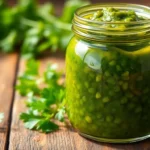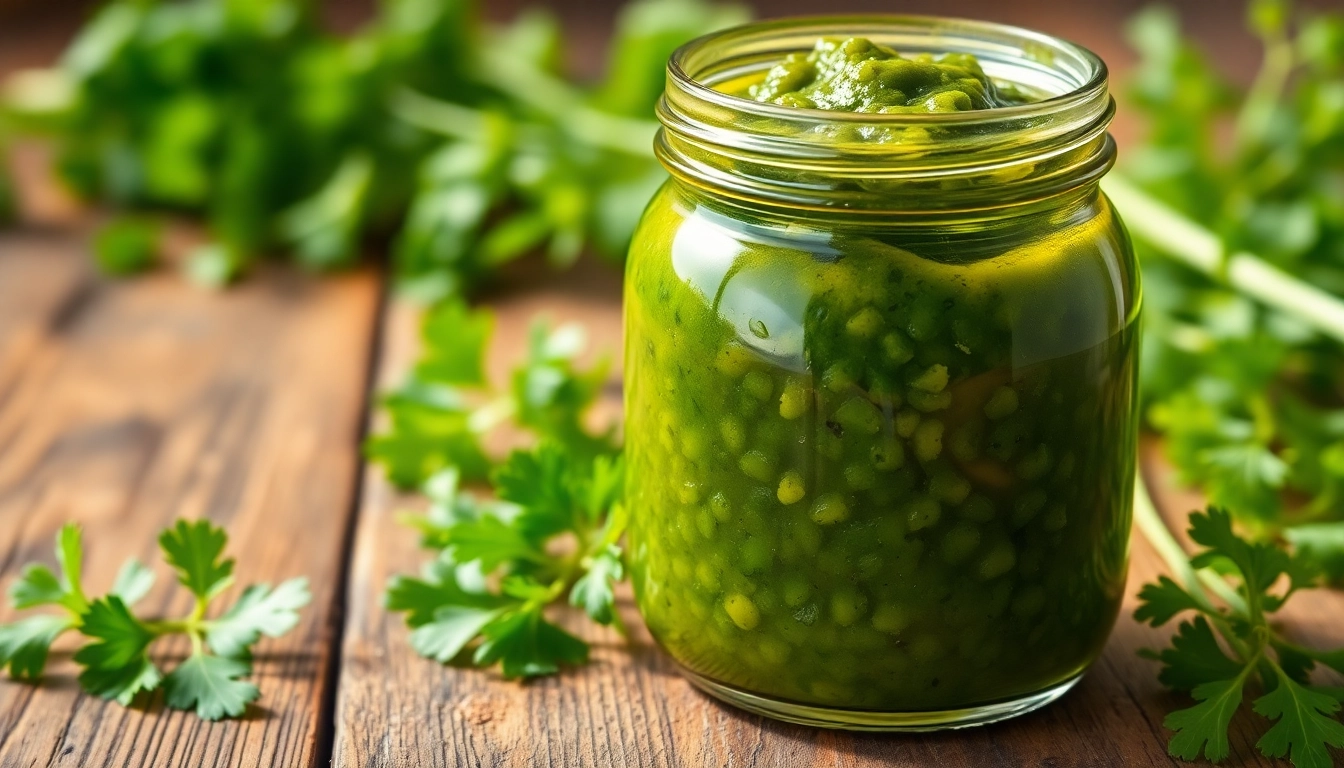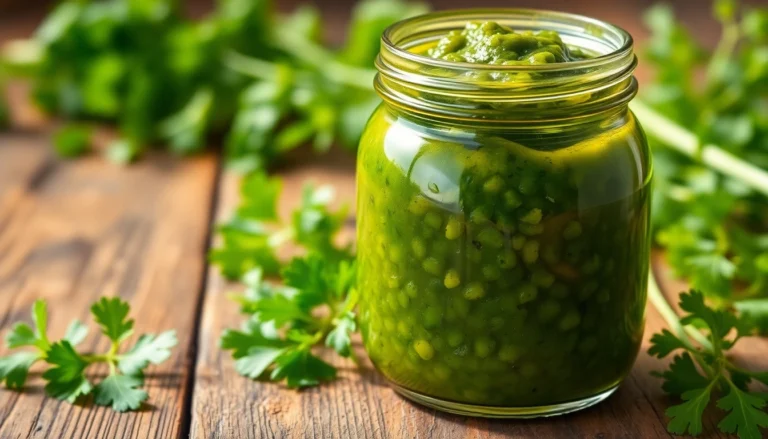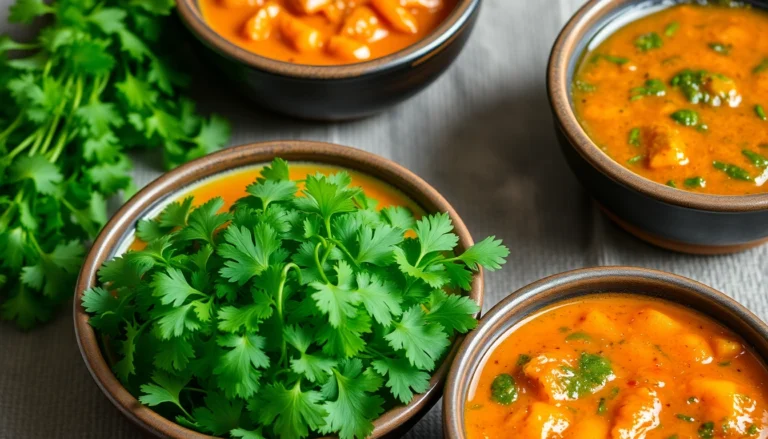Introduction to Coriander Chutney: Flavors and Variations
Coriander chutney is a quintessential condiment in Indian cuisine, renowned for its vibrant flavor, aromatic profile, and versatility. Its unique blend of fresh coriander leaves, spices, tangy elements, and sometimes a hint of sweetness makes it an indispensable accompaniment for a wide range of dishes—from snacks and appetizers to mains and side dishes. As one of the most popular chutneys across regional India, coriander chutney offers numerous variations tailored to local tastes and ingredients, reflecting the diverse culinary heritage of the country.
For those looking to explore authentic, high-quality coriander chutneys, it’s essential to understand the key ingredients that define its flavor profile and how regional influences shape its unique characteristics. Additionally, in today’s health-conscious market, the nutritional benefits and health aspects of coriander chutney are gaining prominence, making it not just a flavor enhancer but also a superfood in its own right. Whether you are a home cook aiming to perfect your recipe or a food exporter seeking to introduce your product into global markets, mastering the nuances of coriander chutney is both a culinary art and a strategic business opportunity.
To explore a range of authentic, expertly crafted coriander chutney products, visit Coriander Chutney and see how Spice Nest’s offerings can elevate your culinary creations or business portfolio.
Understanding the Key Ingredients of Coriander Chutney
The foundation of any high-quality coriander chutney lies in its fresh, vibrant ingredients. The primary component is coriander leaves (cilantro), which provide a fresh, citrusy aroma paired with a bright green color. To enhance flavor, the chutney often includes ingredients like green chilies for heat, garlic for depth, and tangy elements such as lemon juice or raw mango.
Other vital ingredients include spices like cumin seeds, which add earthiness, and salt to enhance overall flavor. Some recipes incorporate mint leaves to provide additional freshness or a touch of yogurt or coconut for creaminess, depending on regional preferences. The consistency and flavor can be adjusted with water or oil, with some versions including tamarind for a slight tang or jaggery for subtle sweetness.
The selection of quality ingredients, particularly fresh coriander, is crucial. Using organic or farm-fresh coriander ensures a more aromatic and flavorful chutney, which is vital for both culinary and export success. Variations in ingredient proportions can dramatically influence the taste and shelf stability, making precise formulation and sourcing essential for manufacturers.
Popular Regional Variations and Unique Recipes
Coriander chutney manifests in numerous regional styles across India, each with distinctive ingredients and flavor profiles. In Gujarat and Rajasthan, the chutney might include roasted cumin and garlic, giving a bold, smoky flavor, known as Rajshthani-style coriander chutney. In South India, coconut and roasted peanuts may be added, resulting in a richer, nuttier version that pairs well with dosas and idlis.
North Indian variants tend to be tangy and spiced with green chilies and lemon, often served alongside chaats, sandwiches, and snacks. Bengalis may add mustard seeds or green mango for a tart twist, while Maharashtrian recipes might feature fresh coriander with a hint of jaggery or tamarind for sweetness and tang.
Modern innovations include blending coriander with kale, spinach, or herbs such as mint and coriander in various proportions to create unique flavor profiles tailored to contemporary palates. Companies like Spice Nest are constantly innovating to produce chutneys that meet regional tastes while maintaining quality and authenticity, expanding their product range for both local and international markets.
Health Benefits and Nutritional Profile of Coriander Chutney
Beyond its culinary appeal, coriander chutney offers impressive health benefits. Coriander leaves are rich in antioxidants, vitamins A, C, and K, and have been traditionally used to aid digestion, promote immunity, and reduce inflammation. The presence of dietary fiber, minerals like iron and manganese, adds to its nutritional value.
Additionally, coriander has been linked to blood sugar regulation, cholesterol reduction, and antibacterial properties. Incorporating coriander chutney into daily diet can support overall health, especially when made with natural, preservative-free ingredients. For health-conscious consumers, organic coriander chutney from trusted exporters like Spice Nest can serve as a flavorful way to boost nutrient intake without additives or artificial preservatives.
When considering exports, emphasizing these health benefits can position coriander chutney as a superfood product, aligning with global trends toward functional foods and healthy snacking.
Step-by-Step Guide to Making Perfect Coriander Chutney
Selecting Fresh Coriander and Other Essentials
The first step to creating a flavorful coriander chutney is sourcing fresh, vibrant coriander leaves. Ideally, purchase organic coriander from reputable suppliers or directly from farmers to ensure purity and taste. Alongside coriander, gather other essentials such as green chilies, garlic, lemon or lime juice, cumin seeds, and salt. Fresh ingredients are critical for achieving the desired aroma, taste, and shelf stability.
Blending Techniques for Smooth vs. Chunky Textures
The texture of coriander chutney can vary depending on culinary preference or target market. For a smooth, consistency ideal for spreads or dipping sauces, blend all ingredients with a little water or oil until a uniform paste forms. To achieve a chunky, rustic texture, pulse the ingredients briefly—being cautious not to over-process. Using a mortar and pestle also provides an artisanal texture favored in some regions.
Tips for Balancing Spicy, Tangy, and Aromatic Flavors
Achieving the perfect flavor balance involves tasting and adjusting seasoning levels throughout the blending process. Add green chilies gradually to control heat. Incorporate acids like lemon juice or tamarind paste carefully to ensure they enhance rather than overpower. A pinch of sugar or jaggery can mellow sharpness, while cumin seeds roasted before grinding add an aromatic depth. Resting the chutney for an hour allows flavors to meld beautifully.
Serving Suggestions and Pairing Ideas
Best Dishes to Complement Coriander Chutney
Coriander chutney pairs exceptionally well with Indian snacks like samosas, pakoras, and vada. It elevates grilled meats and kebabs with its fresh, spicy character and complements fried foods and dosas. For breakfast, serve it alongside poha or upma for an added flavor punch. It also enhances the taste of chaats, sandwiches, and wraps, making it a versatile accompaniment.
Creative Uses in Wraps, Salads, and Snacks
Beyond traditional pairings, coriander chutney can be used as a marinade for grilled vegetables or meats, added as a dressing in salads, or drizzled over roasted potatoes and rice bowls. Its bright flavor invigorates simple sandwiches, and a dollop can be used to spice up hummus, yogurt dips, or cheese platters.
Storing and Shelf Life for Optimal Freshness
Proper storage is essential to maintain freshness and flavor. Transfer the chutney to airtight glass jars and store in the refrigerator. Typically, homemade or high-quality commercial coriander chutney stays fresh for up to one week, while products with natural preservatives can last longer. Avoid contamination by using clean utensils and always check for signs of spoilage before use.
Marketing and Export Strategies for Coriander Chutney Products
Brand Positioning in Global Markets
Successful export of coriander chutney hinges on positioning it as a premium, authentic, and healthy condiment. Highlight unique regional recipes, organic ingredients, and traditional methods. Emphasize certifications, quality control, and adherence to international food standards to build consumer trust. Leveraging storytelling about regional heritage can deepen brand appeal in diverse markets.
Packaging Innovations and Quality Assurance
Packaging plays a critical role in shelf appeal and preservation. Use airtight, BPA-free containers with attractive labels that clearly display ingredients, nutritional info, and certifications. Innovations like single-serve sachets or resealable pouches can cater to modern consumers seeking convenience. Implementing strict quality assurance protocols, including HACCP and ISO certification, enhances export credibility.
Leveraging Food Exhibitions and Online Platforms
Participating in major food expos such as Biofach and other international trade fairs provides invaluable exposure and networking opportunities. Additionally, establishing a strong online presence through B2B portals, social media, and e-commerce platforms expands reach globally. Consistent branding, detailed product information, and customer engagement strategies reinforce market positioning.
Boosting Sales and Customer Engagement
Effective Recipe Content and Demos for Promotion
Sharing innovative recipes and live cooking demos via social media or YouTube helps demonstrate culinary versatility and quality. Collaborating with chefs and food bloggers can generate authentic user experiences and testimonials that influence purchasing decisions.
Customer Feedback and Product Improvement
Actively seeking customer reviews provides insights into preferences, allowing for continuous product refinement. Listening to feedback about flavor, packaging, and usability helps foster trust and encourages repeat business.
Building a Loyal Customer Base Through Sustainable Practices
Promoting sustainability—such as eco-friendly packaging, fair trade ingredients, and ethical sourcing—resonates with today’s ethically conscious consumers. Implementing loyalty programs and engaging customers through educational content about health benefits and regional traditions strengthens brand loyalty.


















